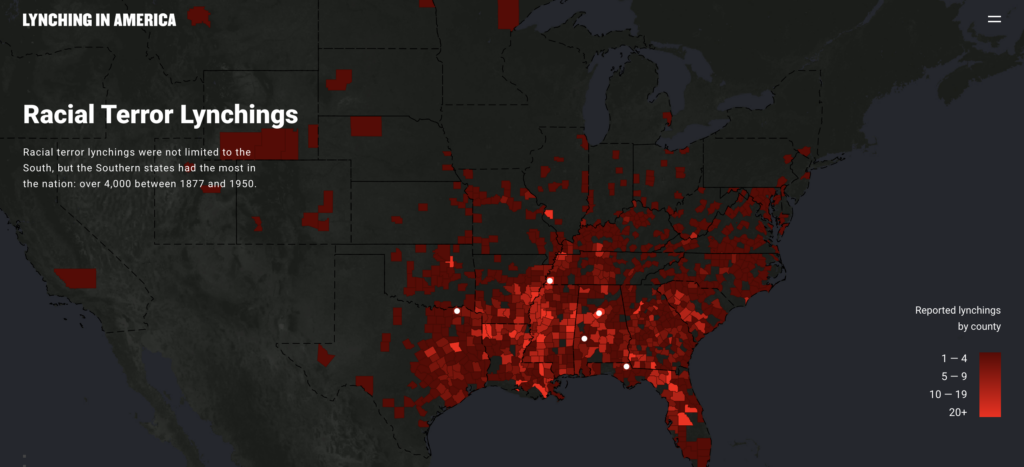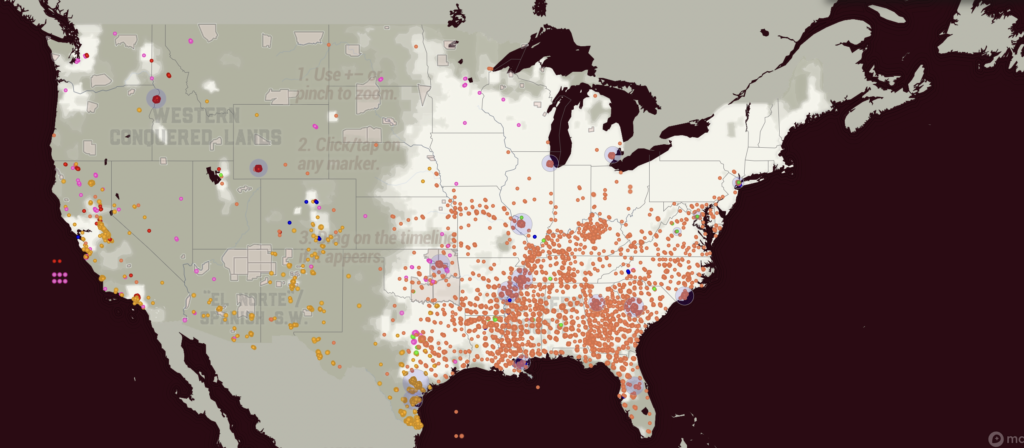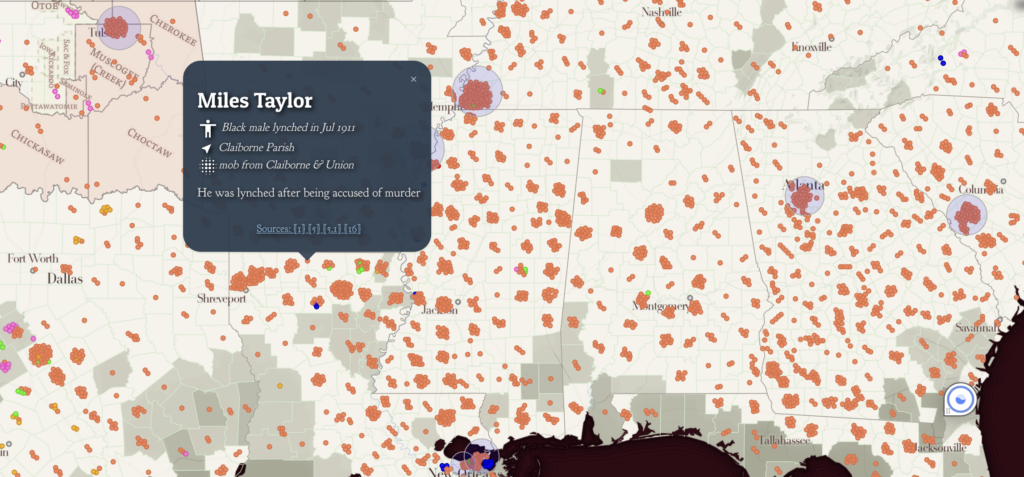The Jim Crow era is a dark chapter of American History. African Americans across the country experienced discriminatory laws. Among some of the challenged African Americans faced were lynchings. When mapping racial history, like lynchings, it is important to be mindful of the ethical ideas surrounding it.
According to Katherine Hepworth, ethical implications can vary. She writes, that these maps are “demonstrating how choices about representation, interaction, and annotation in their data visualizations either do harm in the sense described above, or challenge dominant narratives” 1. In other words, when it comes to mapping race, representation and how we define our terms matter. These maps highlight the importance.


In both of these maps, we see visualizations of racial violence across the United States. In the first map, created by Equal Justice Initiative, we see it centered on the Southern United States. Granted, a majority of racial violence occurred in the South, however, the first map gives you the idea violence outside of the South was nonexistent. In the Map of White Supremacy mob violence, we see much more detail and inclusivity. This map highlights White Supremacy mob violence which includes every racial minority group. This includes, Chinese, Black, Italian, Latinx, and Native American. This map also shares details about each individual case.

Besides representation, how we define our term matters. According to Plain Talk History, there are two definitions of “Lynching”. A strict definition of lynching is when the lynchers “believed they were righteous, never worried they might face charges. To them, a dead victim meant justice: the matter was settled, and townspeople would move on” 2. The broader definition of lynching is the belief when “perpetrators did not claim to be agents of justice. They knew it was murder—in their rage, they didn’t care. This was a homicidal spree to avenge the established order” 3. As you can see, these two defintions of lynching are different. Because of this, how you define “Lynching” means including or excluding a wide variety of victims.
In conclusion, when mapping racial violence, it is important to understand representation. This means that we need to think about who we want to include and how we want to include them. To do this, we must be able to define what we are researching. By doing this, we create the ability to expand or reduce our representation.
- Hepworth, Katherine & Christopher Church. 2018. “Racism in the Machine: Visualization Ethics in Digital Humanities Projects.” Digital Humanities Quarterly, 7. ↩︎
- Monroe & Florence Work Today. 2016. “Map of White Supremacy Mob Violence.” PlainTalkHistory ↩︎
- Monroe & Florence Work Today. 2016. “Map of White Supremacy Mob Violence.” ↩︎


Excellent work Declan – this is a thoughtful comparison between the two maps – I wouldn’t say its the deepest dive possible into the article, but it certainly sufficient as a final blog. Good job.